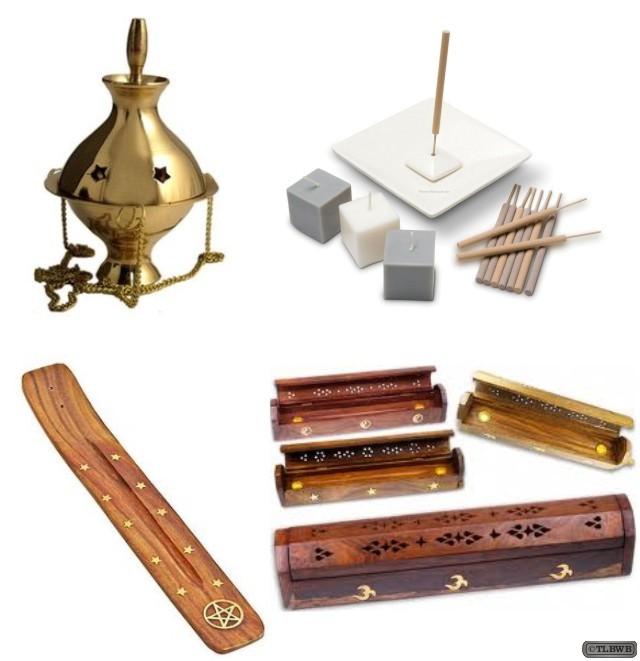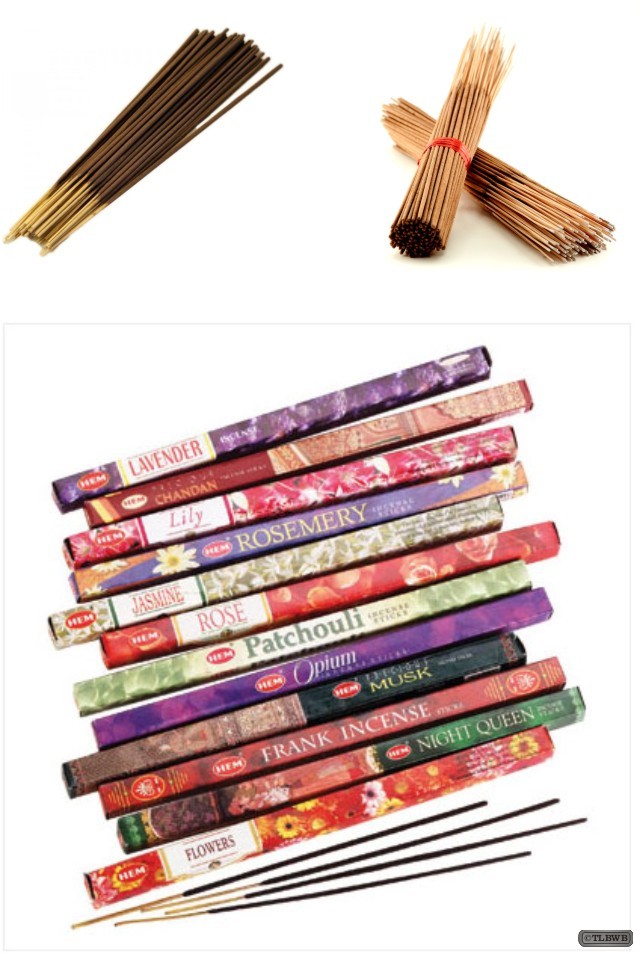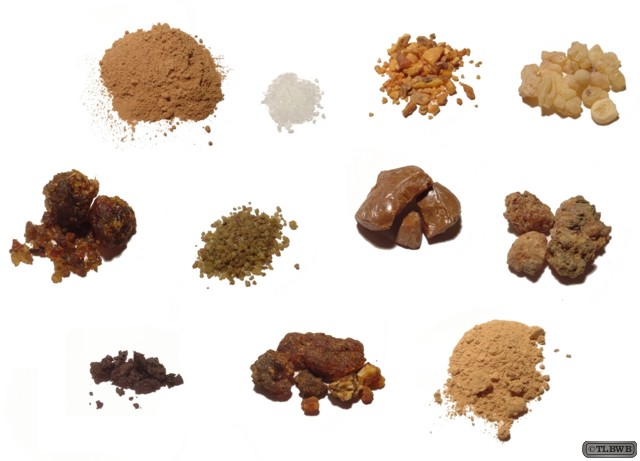Censer
Censers are any type of vessels made for burning incense. These vessels vary greatly in size, form, and material of construction. They may consist of simple earthenware bowls or fire pots to intricately carved silver or gold vessels, small table top objects a few centimetres tall to as many as several metres high. Many designs use openwork to allow a flow of air. In many cultures, burning incense has spiritual and religious connotations, and this influences the design and decoration of the censer.
Incense
Incense is aromatic biotic material which releases fragrant smoke when burned. The term refers to the material itself, rather than to the aroma that it produces. Incense is used for a variety of purposes, including the ceremonies of all the main religions, to overcome bad smells, repel insects, spirituality, aromatherapy, meditation, and for simple pleasure.
Incense is composed of aromatic plant materials, often combined with essential oils. The forms taken by incense differ with the underlying culture, and have changed with advances in technology and increasing diversity in the reasons for burning it. Incense can generally be separated into two main types: “indirect-burning” and “direct-burning”. Indirect-burning incense (or “non-combustible incense”) is not capable of burning on its own, and requires a separate heat source. Direct-burning incense (or “combustible incense”) is lit directly by a flame and then fanned or blown out, leaving a glowing ember that smoulders and releases fragrance. Direct-burning incense is either a paste formed around a bamboo stick, or a paste that is extruded into a stick or cone shape.
The Lost Bearded White Brother



Leave a Reply